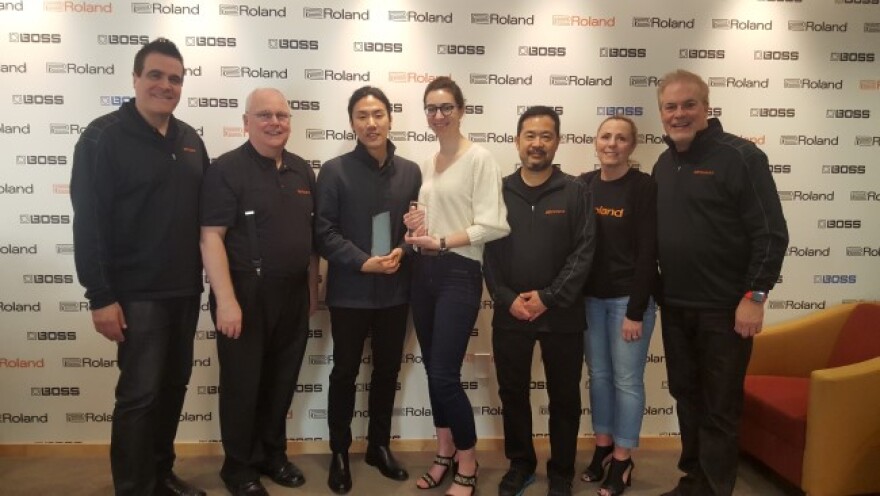After seven hours of sitting at a computer creating a submission for Roland’s Digital Piano Design Contest, Rebekah Winegarner needed some fun. Clicking through the material menu on her industrial design software, she changed her wooden piano, shaped like a rock formation from the Utah desert, to the color of beer.
“I wanted something to at least laugh about to myself. But it actually looked really cool, and I eventually came up with something visually compelling,” said Winegarner, a junior industrial design student at the University of Kansas.
She spent the next three hours tweaking the lighting to perfect the piano's new fluid hues of orange, yellow, and brown. Winegarner’s tangent led to the theme of her winning design, "Amber Unleashed."
The piano is only a rendering, but Winegarner says it is possible to make by pouring resin in a computer-generated mold, then polishing the form after it hardens. She predicts the instrument would be too expensive to mass manufacture, but feasible on a small scale.
Roland is a Japanese company that manufactures electronic music equipment. For its contest, the company challenged designers from all over the world to conceive a digital grand piano of the future. The theme was "unleash."

According to a news release, Roland received 128 designs and planned to choose only three winners. But it opened up five slots in the third-place category of "Inception Award" because of “the large number of high-caliber entries.”
Winegarner was one of the Inception Award winners (others were from the U.S., Japan, Italy, Poland, and Romania). Her prize is the opportunity to meet Roland’s design team in Los Angeles.
“Instead of a cash prize, they’re using that money to fly me to their U.S. offices to schmooze me and talk about design, which is awesome,” she said.
The prize is well suited for Winegarner, who is scheduled to graduate in May 2017 but is already hot on her search for a job. When she read Roland’s congratulatory email on January 17, she said, the first thing she did was add a line about the award to her resume and portfolio.
“The validation was amazing," she said. "It felt like I can make designs that appeal to an audience or a client. I can make beautiful things all day, but unless I have a buy-in it doesn’t move anywhere and I don’t get a job.”
Winegarner graduated from Blue Valley High School in Stilwell, Kansas, in 2013. She says she had already enrolled at an art institute, but then realized she didn’t want to make art for the sake of art.
“The reason I got into industrial design, and the reason I think I’ll stay in it until I die, is because it’s about having new problems presented. That’s what keeps me working on it for 18 hours a day, or 12 depending on what project I have,” she said.

Winegarner spent about triple the amount of time she normally spends on class projects making "Amber Unleashed." She researched and sketched futuristic concert-grand pianos for nearly two weeks before rendering the form using four different industrial-design computer programs. The keys took almost seven hours, and the lighting took nearly 15 hours, she said.
Winegarner put in the effort, she said, because she was passionate about its aesthetic appeal. She’d entered design competitions in the past but never won — or felt so confident about her submission.
“After a couple days in front of a computer, I leaned back and I said, ‘Yes. I like this. And I think this has a chance.’”
Hannah Copeland is an announcer and arts contributor at KCUR. Follow her on Twitter @hannahecopeland.

